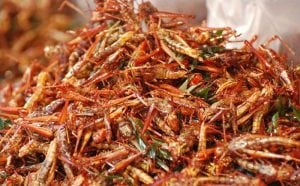Lamb prices rise as export markets begin to open up
26 March 2009
producers are enjoying an unprecedented boom in prices, with the best
old-season lambs making as much as £100 per head: even cast ewes of
decent quality are worth well over £80 – some £30 per head above the
levels of 12 months ago.
The trade is to a large extent based on the
relatively low value of sterling against the euro and declining
production throughout the EU and even in New Zealand.
France
remains the UK’s most important export customer and figures recently
released confirm that fact. Last year France imported 128,200 tonnes of
sheep meat from a range of sources – little different from the 2007
figure, but considerably below the 138,300 tonnes of 2006. The fact
is that lamb consumption throughout the EU is dropping, with less of
the younger generation savouring a chop or a decent roast.
UK
trade with France in lamb last year totalled 58,700 tonnes, which was
10,000 tonnes higher than in 2007. However, it should be remembered
that the autumn of 2007 saw UK exports of all meats banned as a result
of an outbreak of foot-and-mouth disease in Surrey.
The reality is that
last year’s UK exports of sheep meat were more or less equal to the
2006 figure. The current year might just see an increase in exports as
domestic production in France continues to decline and alternative
supplies from Ireland appear uncompetitive on currency grounds.
It
is always dangerous to be over-reliant on one market and the
announcement that the United Arab Emirates, and that includes Dubai and
Abu Dhabi, is once more willing to permit imports of red meat from the
UK is clearly good news.
The re-opening of this relatively small, but
potentially expanding, market has been achieved as a result of a
considerable degree of hard work and lobbying by Quality Meat Scotland
and associated agencies throughout the UK, not the least of which is
Scottish Development International (SDI).
Laurent Vernet, the
head of marketing for QMS, said: “Dubai in particular has become one of
the major transportation hubs of the world, welcoming more than 18
million travellers in 2008, and has a bustling economy attracting many
foreign workers. The population has more than doubled over the past
decade to 1.6 million people.”
Lamb and sheep meat in general is
the favoured diet of much of the Arab world and, with a whole host of
new high-class hotels having opened in the Emirates in recent years,
demand is reported to be strong.
Imports of UK lamb also have the
potential to open the door for Scotch beef, especially with the Middle
East remaining largely immune to the global recession.
However,
all exports of lamb must be subject to Halal certification: this means
that there is no pre-slaughter stunning in abattoirs and may not sit
easy with UK animal welfare organisations.
Initial discussions have
taken place between likely exporters and potential importers, but the
aim is to develop wider markets in the Middle East.
David Smith,
operations director at SDI, said: “This is a terrific development for
the Scottish red meat industry. The UAE provides real opportunities for
Scottish food exporters. We will continue to work with QMS to get
Scotch beef as well as lamb into this expanding and dynamic market.”
QMS
has other non-EU target markets in its sights pending successful
negotiations on the required export documentation. Hong Kong and
Singapore appear likely targets.
QMS continues to receive considerable
support from the Scottish Government in its aim to see the Scottish
food and drinks industry increase sales from the current level of £6
billion each year to at least £10bn by 2017, but will depend on farmers
receiving favourable returns for their livestock and crops over that
timescale.
As the Common Agricultural Policy is currently
formulated, farmers can opt not to produce unless they can see a profit
safe in the knowledge that they will still receive substantial support.



